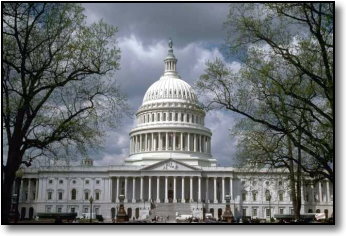

<< July
<<
August
<<
September

<< June
<<
July
<<
August
<<
September

<< July
<<
August
<<
September

<< June
<<
July
<<
August
<<
September

<< June
<<
July
<<
Aug/Sept

<< Part I
(June/July)
<< Part II
(August)
<< Part I & Part II Bibliography
<< Part III
(September)

<< June
<<
July
<<
August
<<
September

<< June
<<
July/August
<<
September

<< June
<< July
<< August
<< July/Aug
Bibliography
<<
September

<< Part I
(June/July)
<< Part II
(August)
<<Part III
(September)
<< Bibliography

<< August
<<
September
* * *

Click here to read about the summer's FEATURED ARTISTS!

Visit the site's GUESTS page.

Click here for site NEWS.
* * *


|
|
2013 Essays - September
THE AFFORDABLE CARE ACT: NEW AVENUES IN HEALTH CARE AND INSURANCE
In 2010, the U.S. reached a fork in the road in health care with the passage of two pieces of legislation, The Patient Protection and
Affordable Care Act and associated amendments in The Health Care and Education Reconciliation Act. The final amended version of the law is known as the "Affordable Care Act" and is often referred to as "Obamacare." Since major provisions of the law are set to take
effect on October 1st of this year and January 1st of 2014, the final summer essay will focus on some of the changes taking place and what they might mean for Californians and how they pay for
their health care. Numbers/letters appearing in [square brackets] within the text indicate the particular section of the Patient Protection and Affordable Care Act where the information can be found.
As with past essays, the story will be interactive in the sense that visitors may simply read the text or instead follow
links or look over supporting materials to gain a more in-depth understanding of the topics presented. Footnotes and a bibliography will be included at
the end of the essay, and a link to a glossary of health care-related terminology is available for use as necessary. (CLICK HERE to reach the glossary.)
 In March of 2010, two laws were passed by Congress outlining sweeping changes in U.S. health care and health insurance: The Patient Protection and Affordable Care
Act [Public Law 111-148, 42 U.S.C. 18001] and subsequent amendments found in the Health Care and Education Reconciliation Act of 2010 [Public Law 111-152, 42 U.S.C. 1305]. The legislation and amendments together have come to be known
as the "Affordable Care Act" and also "Obamacare." Following the law's passage it was challenged in court. The law subsequently was upheld by the Supreme Court in 2012, clearing the way for its provisions to be
implemented. (Those wishing to download copies of the laws will find links at www.healthcare.gov/where-can-i-read-the-affordable-care-act.) In March of 2010, two laws were passed by Congress outlining sweeping changes in U.S. health care and health insurance: The Patient Protection and Affordable Care
Act [Public Law 111-148, 42 U.S.C. 18001] and subsequent amendments found in the Health Care and Education Reconciliation Act of 2010 [Public Law 111-152, 42 U.S.C. 1305]. The legislation and amendments together have come to be known
as the "Affordable Care Act" and also "Obamacare." Following the law's passage it was challenged in court. The law subsequently was upheld by the Supreme Court in 2012, clearing the way for its provisions to be
implemented. (Those wishing to download copies of the laws will find links at www.healthcare.gov/where-can-i-read-the-affordable-care-act.)
At the heart of the law are changes to the health insurance market, primarily by establishing state-based exchanges through which health insurance
can be purchased. Those exchanges will open to the public on October 1st, selling insurance policies which will go into effect on January 1, 2014. Beginning in January, all U.S. citizens and legal residents must have health insurance
or pay a penalty, and access to the exchanges will be limited to lawful residents of the U.S. No one can say with any certainty what the outcome of the changes is likely to be, since no one can say how many people will sign up for insurance
through the exchanges. The first open enrollment period will close on March 31, 2014. The information below will describe some of the basic provisions of the law, provide links for further information, and present a few "Extras"
culled from the text of the laws.
Affordable Care Act Provisions Already in Effect
Certain provisions of the Affordable Care Act designed to improve coverage under all health insurance plans took effect shortly after
the Act was passed [Sec. 2711, 124 Stat 131; 42 U.S.C. 300gg]. These provisions include the elimination of annual and lifetime limits on the dollar value of benefits for any participant or beneficiary, the addition of a
number of preventative health services to be covered on all policies, the prohibition of discrimination based on salary, and for plans offering coverage for children on an adult's policy, the mandated inclusion of a child/children until the child/children
turn 26 years of age. The federal government site for healthcare-related information is www.healthcare.gov (There is a link to a Spanish version of the site at the
top of the home page, and links to information in Chinese, Korean, Portugese, French Creole, Polish, Spanish and Vietnamese at the bottom of the home page.)
Health Benefit (Insurance) Exchanges and Plans
The health benefit exchanges are health insurance marketplaces, or "one-stop shops where people can compare health insurance plans and buy
the plan that works best for them, their family and their budget." (n1) As the law is written [Sec. 1321, 42 U.S.C. 10841, 124 Stat. 186], states are given the option of establishing an exchange. Some states have opted not
to operate exchanges. In that case, the law says that if a state does not choose to establish an exchange or will not have an exchange operational by January 1, 2014, then "the Secretary shall (directly or through agreement with
a not-for-profit entity) establish and operate such exchange within the state and the Secretary shall take such actions as are necessary to implement such other requirement." According to a recent O.C. Register article, as of
August 2013 17 states (including California) had established or declared a state-based exchange, 27 states are defaulting to federally facilitated exchanges, and 7 are planning state/federal partnership exchanges. (n2)
In California, the exchange is called Covered California (www.coveredca.com).
 Nobody is required to purchase a health insurance plan from a state exchange. However, those seeking and/or qualifying for premium assistance (subsidies) from the
federal government will only be able to apply for and use those subsidies when purchasing a plan from a qualified exchange. Health plans which have been selected to offer coverage through the exchanges will do so (for the most
part) at four levels: bronze, silver, gold and platinum. Benefits will be fairly uniform. The primary difference is the percentage of annual costs covered and the annual out-of-pocket costs for an individual or a family. A bronze plan
will cover 60% of average annual costs, a silver plan 70%, a gold plan 80% and a platinum plan 90%. Maximum annual out-of-pocket expenses for bronze, silver and gold plans will be $6,350 for individuals and $12,700 for families, and $4,000 for
individuals and $8,000 for families under the platinum plan. Premium rates will vary by region, zip code, age and plan level. A booklet showing health insurance companies in Covered California by pricing region, plus examples of possible premium
prices by region and plan level, can be found at www.coveredca.com/news/PDFs/CC_Health_Plans_Booklet-rev-1-8-6.pdf or by clicking the
booklet link on the following page: www.coveredca.com/news/press-releases/health-plans.html. Pages in the booklet indicate that it was last
updated August 6, 2013. Nobody is required to purchase a health insurance plan from a state exchange. However, those seeking and/or qualifying for premium assistance (subsidies) from the
federal government will only be able to apply for and use those subsidies when purchasing a plan from a qualified exchange. Health plans which have been selected to offer coverage through the exchanges will do so (for the most
part) at four levels: bronze, silver, gold and platinum. Benefits will be fairly uniform. The primary difference is the percentage of annual costs covered and the annual out-of-pocket costs for an individual or a family. A bronze plan
will cover 60% of average annual costs, a silver plan 70%, a gold plan 80% and a platinum plan 90%. Maximum annual out-of-pocket expenses for bronze, silver and gold plans will be $6,350 for individuals and $12,700 for families, and $4,000 for
individuals and $8,000 for families under the platinum plan. Premium rates will vary by region, zip code, age and plan level. A booklet showing health insurance companies in Covered California by pricing region, plus examples of possible premium
prices by region and plan level, can be found at www.coveredca.com/news/PDFs/CC_Health_Plans_Booklet-rev-1-8-6.pdf or by clicking the
booklet link on the following page: www.coveredca.com/news/press-releases/health-plans.html. Pages in the booklet indicate that it was last
updated August 6, 2013.
A couple of other options exist in addition to the plans listed above. Under the Affordable Care Act, states have the option of expanding Medicaid (Medi-Cal in California) coverage.
California has chosen to do so, allowing adults without children to obtain benefits for the first time. Also, adults under the age of 30 will have the option of purchasing catastrophic coverage-only plans. These plans include the free
preventative care measures included in all the other plans plus the first three non-preventative care doctor visits. After that all expenses must be paid by the individual until the maximum out-of-pockets expense limit has been reached. Those certified as
having an "economic hardship" also will be able to purchase catastrophic coverage-only plans. Those receiving insurance through their employers should consult with the employers regarding any changes in their plans which
might be taking place, and those who were enrolled in the same health insurance plans prior to March 23, 2010 will be allowed to continue in those plans under a "grandfathered" status. However, some of the
benefits available through the Affordable Care Act may not apply in "grandfathered" plans.
As defined by the law [Sec. 1302, 42 U.S.C. 18022, 124 Stat. 163], all plans must cover the following "essential health benefits:" ambulatory patient services, emergency services,
hospitalization, maternity and newborn care, mental health and substance use disorder services, including behavioral health treatment, prescription drugs, rehabilitative and habilitative services and devices, laboratory services, preventative
and wellness services and chronic disease management, and pediatric services, including oral and vision care. The exchanges cannot exclude any person based on a pre-existing medical condition, must accept those who apply for coverage, and must
renew or continue coverage [Subtitle C, Part 1, Sec. 2702-3, 42 U.S.C. 300gg 1 and 2, 124 Stat. 156].
Penalties
Many have voiced objections to the provisions of the Affordable Care Act which require every
lawful resident of the U.S. to have health care coverage, whether obtained through one of the exchanges, an employer, or elsewhere. The law established financial penalties
for those who do not obtain health insurance. Early versions of the laws in a "Compilation" format list the penalties as $95 or 1 percent of income (whichever is higher) in 2014,
$325 or 2 percent of income in 2015, and $695 or 2.5 percent of income after 2015. However, in the online PDF certified by the U.S. Government Printing Office as being the most recent
version of the Affordable Care Act, penalties [in Ch. 48, 26 U.S.C. 5000A, 124 Stat. 245] are listed as $95 for 2014, $350 for 2015 and $750 multiplied by the cost-of-living
adjustment after 2015, with income specifications eliminated [see Subtitle F, Part I, Ch. 48 - Maintenance of Minimal Essential Coverage].
* *
*
 The information and links above are a basic start for anyone wanting to know more about options available to them through the health insurance
exchanges established under the Affordable Care Act. More information and services to assist in enrollment will be available after October 1st. The full text of the law, however, is extensive -- about 1,000 pages full of passages like the
following: "The table of sections for subpart C of part IV of subchapter A of chapter 1 of the Internal Revenue Code of 1986, as amended by this Act, is amended by inserting after the item relating to section 36B the following new item . . ." Curious
as to what the hundreds of other pages of text in both the Patient Protection and Affordable Care Act (PPACA) and the health-related portions of the Health Care and Education Reconciliation Act of 2010 might say, I set out to read the documents
in their entirety (and made it most of the way). The following "Extras" below are a brief sampling of other passages and provisions found in the documents. Readers are welcome to provide comments or correct any passages which they consider to be misinterpreted. The information and links above are a basic start for anyone wanting to know more about options available to them through the health insurance
exchanges established under the Affordable Care Act. More information and services to assist in enrollment will be available after October 1st. The full text of the law, however, is extensive -- about 1,000 pages full of passages like the
following: "The table of sections for subpart C of part IV of subchapter A of chapter 1 of the Internal Revenue Code of 1986, as amended by this Act, is amended by inserting after the item relating to section 36B the following new item . . ." Curious
as to what the hundreds of other pages of text in both the Patient Protection and Affordable Care Act (PPACA) and the health-related portions of the Health Care and Education Reconciliation Act of 2010 might say, I set out to read the documents
in their entirety (and made it most of the way). The following "Extras" below are a brief sampling of other passages and provisions found in the documents. Readers are welcome to provide comments or correct any passages which they consider to be misinterpreted.
Affordable Care Act "Extras"
1. PPACA Subpart II, Sec. 2717 [42 U.S.C. 300-gg17] - Ensuring the Quality of Care. The following passage is included as part (c) in May and November 2010 Compilation books of the laws but is completely absent from
the current version at 124 Stats 136.
(c) PROTECTION OF SECOND AMENDMENT GUN RIGHTS - [As added by section 10101(e)(2)]
"(1) WELLNESS AND PREVENTION PROGRAMS. - A wellness and health promotion activity implemented under subsection (a)(1)(D) may not require the disclosure or collection of any information
relating to --
"(A) the presence or storage of a lawfully-possessed firearm or ammunition in the residence or on the property of an individual; or
"(B) the lawful use, possession, or storage of a firearm or ammunition by an individual.
"(2) LIMITATION ON DATA COLLECTION. - None of the authorities provided to the Secretary under the Patient Protection and Affordable Care Act or an amendment made by that Act
shall be construed to authorize or may be used for the collection of any information relating to -
"(A) the lawful ownership or possession of a firearm or ammunition;
"(B) the lawful use of a firearm or ammunition; or
"(C) the lawful storage of a firearm or ammunition.
"(3) LIMITATION ON DATABASES OR DATA BANKS. - None of the authorities provided to the Secretary under the PPACA or an amendment made by that Act shall be construed to authorize or may be used
to maintain records of individual ownership or possession of a firearm or ammunition.
"(4) LIMITATION ON DETERMINATION OF PREMIUM RATES OR ELIGIBILITY FOR HEALTH INSURANCE. - A premium rate may not be increased, health insurance coverage may not be denied, and a
discount, rebate or reward offered for participation in a wellness program may not be reduced or withheld under any health benefit plan issued pursuant to or in accordance with the PPACA or an amendment
made by that Act on the basis of, or on reliance upon -
"(A) the lawful ownership or possession of a firearm or ammunition; or
"(B) the lawful use or storage of a firearm or ammunition.
"(5) LIMITATION ON DATA COLLECTION REQUIREMENTS FOR INDIVIDUALS. - No individual shall be required to disclose any information under any data collection activity
authorized under the PPACA or an amendment made by that Act relating to --
"(A) the lawful ownership or possession of a firearm or ammunition; or
"(B) the lawful use, possession, or storage of a firearm or ammunition.
2. PPACA Subtitle D, Part 2 - Consumer Choices and Insurance Competition Through Health Benefit Exchanges, Sec. 1312 [42 U.S.C. 18032], Consumer Choice (d)(3) - Voluntary Nature of an Exchange, (D) Members
of Congress in the Exchange (also at 124 Stat. 183). What is clear - the passage below regarding members of Congress and their staffs.
(D) MEMBERS OF CONGRESS IN THE EXCHANGE. -
"(i) REQUIREMENT. - Notwithstanding any other provision of the law, after the effective date of this subtitle, the only health plans that the Federal Government may make available to Members of Congress and
congressional staff with respect to their service as a Member of Congress or congressional staff shall be health plans that are -
"(I) created under this Act (or an amendment made by this Act); or
"(II) offered through an Exchange established under this Act (or an amendment made by this act).
"(ii) DEFINITIONS. - In this section:
"(I) MEMBER OF CONGRESS. - The term "Member of Congress" means any member of the House of Representatives or the Senate.
"(II) CONGRESSIONAL STAFF. - The terms "congressional staff" means all full-time and part-time employees employed by the official office of a Member of Congress, whether in
Washington, D.C. or outside of Washington, D.C.
What is less clear - this apparently does not apply to other Federal Government employees? Section 1334 [42 U.S.C. 18054] MULTI-STATE PLANS, appears in May and November compilation books of the laws but it is completely eliminated in the
current version at 124 Stat. 208. In the compilation books, portions of Section 1334 read as listed below:
"(f) APPLICABILITY. - The requirements under chapter 89 of title 5, United States Code, applicable to health benefits plans under such chapter shall apply to multi-State qualified health plans provided for under this section
to the extent that such requirements do not conflict with a provision of this title
"(g) CONTINUED SUPPORT FOR FEHBP. -
"(1) MAINTENANCE OF EFFORT. - Nothing in this section shall be construed to permit the Director (of Personnel) to allocate fewer financial or personnel resources to the functions of the Office
Personnel Management related to the administration of the Federal Employees Health Benefit Program under chapter 89 of title 5, United States Code.
"(2) SEPARATE RISK POOL. - Enrollees in a multi-State qualified health plan under this section shall be treated as a separate risk pool apart from enrollees in the Federal Employees Health
Benefit Program under chapter 89 of title 5, United States Code.
"(3) AUTHORITY TO ESTABLISH SEPARATE ENTITIES. - The Director may establish such separate units or offices within the Office of Personnel Management as the Director determines to be appropriate to
ensure that the administration of multi-State qualified health plans under this section does not interfere with the effective administration of the Federal Employees Health Benefit Program under chapter 89
of title 5, United States Code . . .
"(6) FEHBP PLANS NOT REQUIRED TO PARTICIPATE. - Nothing in this section shall require that a carrier offering coverage under the Federal Employees Health Benefit Program under
chapter 89 of title 5, United States Code, also offer a multi-state qualified health plan under this section.
Instead, in the current version of the law at 124 Stat. 208, a somewhat nebulous paragraph added to the end of the prior section, Section 1333, reads:
(7) STATE LAW MANDATING BENEFIT COVERAGE BY A HEALTH BENEFITS PLAN. - For the purposes of this subsection, a State law mandating benefit coverage by a
health plan is a law that mandates health insurance coverage or the offer of health insurance coverage for specific health services or specific diseases. A law that mandates health insurance
coverage or reimbursement for services provided by certain classes of providers of health care services, or a law that mandates that certain classes of individuals must be covered as a group or as dependents, is not a State law
mandating benefit coverage by a health benefits plan.
 3. PPACA Subpart B - Eligibility Determinations. Sec. 1411, 42 U.S.C. 10881, (c) Verification of Information Contained in Records of Specific Federal Officials, 124 Stat.
226. 3. PPACA Subpart B - Eligibility Determinations. Sec. 1411, 42 U.S.C. 10881, (c) Verification of Information Contained in Records of Specific Federal Officials, 124 Stat.
226.
(1) INFORMATION TRANSFERRED TO SECRETARY. - An Exchange shall submit the information provided by an applicant under subsection (b) to the Secretary for verification in accordance
with the requirements of this subsection and subsection (d).
(2) CITIZENSHIP OR IMMIGRATION STATUS. -
(A) COMMISSIONER OF SOCIAL SECURITY. - The Secretary shall submit to the Commissioner of Social Security the following information for a determination
as to whether the information provided is consistent with the information in the records of the Commissioner:
(i) The name, date of birth and social security number of each individual for whom such information was provided
under subsection (b)(2) (ie, the Exchange)
(ii) The attestation of an individual that the individual is a citizen.
(B) SECRETARY OF HOMELAND SECURITY. -
(i) IN GENERAL. - In the case of an individual -
(I) who attests that the individual is an alien lawfully present in the United States; or
(II) who attests that the individual is a citizen but with respect to whom the Commissioner of Social Security has notified the Secretary under subsection
(e)(3) that the attestation is inconsistent with information in the records maintained by the Commissioner;
the Secretary shall submit to the Secretary of Homeland Security the information described in clause (ii) for a determination as to whether the information provided is consistent
with the information in the records of the Secretary of Homeland Security . . .
(3) ELIGIBILITY FOR TAX CREDIT AND COST-SHARING REDUCTION. - The Secretary shall submit the information described in subsection (b)(3)(A) provided under paragraph (3), (4), or (5)
of subsection (b) to the Secretary of the Treasury for verification of household income and family size for purposes of eligibility.
(4) METHODS. -
(A) IN GENERAL. - The Secretary, in consultation with the Secretary of the Treasury, the Secretary of Homeland Security, and the Commissioner of Social Security, shall provide
that verifications and determinations under this subsection shall be done -
(i) through use of an on-line system or otherwise for the electronic submission of, and response to, the information
submitted under this subsection with respect to an applicant; or
(ii) by determining the consistency of the information submitted with the information maintained in the records of the Secretary of Treasury, the Secretary of
Homeland Security, or the Commissioner of Social Security through such other method as is approved by the Secretary.
For those opting not to purchase health insurance and pay a penalty instead, that penalty will be paid on the taxpayer's tax return for the tax year in which the penalty is taken [Section 5000A of the Internal Revenue Code as outlined in
Chapter 48 of the PPACA]. However, according to Subpart D, Information Regarding Health Insurance Coverage, Sec. 6055, (e) Minimal Essential Coverage (2)(c) [124 Stat. 251], NOTIFICATION OF NON-ENROLLMENT:
Not later than June 30 of each year, the Secretary of the Treasury, acting through the Internal Revenue Service and in consultation with the Secretary of Health and Human Services,
shall send a notification to each individual who files an individual income tax return and who is not enrolled in minimum essential coverage (as defined in section 5000A of the Internal Revenue Code of 1986). Such notification shall
contain information on the services available through the Exchange operating in the State in which the individual resides.
4. Programs and "Revenue Provisions"
It would be impossible to succinctly summarize the billions of dollars the law allots to health councils, commissions, studies, grants, public health work force programs and other measures - in
addition to the insurance premium subsidies - which hopefully will improve the delivery of health care in the U.S. It is not until toward the end of the law in the "Revenue Provisions" section [Title IX, Sec 9001;
124 Stat. 847] that any mention is made of how some of the hundreds of new programs will be paid for. Following is a brief list of many of the "Revenue Provisions" (taxes) specified in the law:
(1) Sec. 4980I [26 U.S.C. 4980I, 124 Stat. 848]: Excise Tax on High-Cost Employer-Sponsored Health Coverage (tax equal to 40 percent of excess benefits, as defined by a specified formula)
(2) Sec. 9006 [124 Stat. 855]: Expansion of Information Reporting Requirements. Somewhat nebulous explanation; applies specifically to corporations for "payments for property and other gross proceeds," saying that "the
Secretary may prescribe such regulations and other guidance as may be appropriate or necessary to carry out the purpose of this section . . ."
(3) Sec. 9008 [124 Stat. 859]: Imposition on Annual Fee on Branded Prescription Pharmaceutical Manufacturers and Importers. Fee treated as excise tax, not entirely clear from law how amount is determined. Says that percentage
of sales of branded prescription drug sales is 100 percent for companies with more than $400,000,000 in sales, but with discrepancies in documents. Compilation versions contain "Applicable Amounts" charts showing billions of dollars annually ($3 billion for 2014, for
example), yet second chart is eliminated in the most current version [124 Stat. 860] and is substituted by a phrase which reads, "The Secretary of the Treasury shall calculate the amount of each covered entity's fee for any calendar year under paragraph (1).
In (c) the law states that these fees will be transferred to the Medicare Part B Trust Fund.
(4) Subchapter E - Medical Devices, [Sec. 4191, 124 Stat. 862]: In compilaton editions, this tax is listed as a 2.3 percent tax on the sale of any medical device by the manufacturer, producer, or importer of the device (and
excludes eyeglasses, contact lenses, hearing aids and other devices which are purchased by the general public at retail for individual use). In the current version of the law [124 Stat. 863], the tax is calculated as "an amount that bears the same ratio to $2 billion as the
covered entity's gross receipts from medical device sales taken into account during the preceding calendar year . . ."
(5)Sec. 9010 [124 Stat. 865]: Imposition of an annual fee on health insurance providers: This is another "excise tax" for which the text varies substantially between the compilation books and the final, current version. In the
compilation editions. In all versions, the tax amount is based on the entity's net premiums written during the calendar year, but the final version also adds a consideration for third-party administration agreement fees. Very substantial differences exist in the editions between the
definitions of entities excluded from having to pay the tax.
In the compilation editions, the excluded entities were listed as:
(A) Any employer to the extent that such employer self-insures its employees' health risks,
(B) Any government entity;
(C) Any entity -
(i) which is incorporated as a nonprofit corporation under a State law,
(ii) no part of the net earnings of which inures to the benefit of any private shareholder or individual, no substantial part of the activities of which
is carrying on propaganda, or otherwise attempting, to influence legislation . . . and which does not participate in , or intervene in . . . any political campaign on behalf of (or in opposition to) any candidate for public office, and
(iii) more than 80 percent of the gross revenues of which is received from government programs that target low-income, elderly or disabled populations . . . and
(D) Any entity which is described in section 501(c)(9) of such Code and which is established by an entity (other than by an employer or employers) for purposes of providing health care benefits.
 In the current edition of the law [124 Stat. 866], the excluded entities have been changed to read: In the current edition of the law [124 Stat. 866], the excluded entities have been changed to read:
(A) any employer to the extent that such employer self-insures its employees' health risks, or
(B) any governmental entity (except to the extent such an entity provides health insurance coverage through the
community health insurance option under section 1323).
In the current edition of the law (and I very much hope that someone will look this over to make sure it is not being misinterpreted) [Sec. 1323, 124 Stat. 192, 42 U.S.C. 18043], the "community health insurance option" is voluntary in
nature, there is no requirement for individuals to join, and states may elect to prohibit Exchanges from offering a community health insurance option. It is defined below: [beginning at 124 Stat. 193]
(2) COMMUNITY HEALTH INSURANCE OPTION. - In this section, the term "community health insurance option" means health insurance coverage that -
(A) except as specifically provided for in this section, complies with the requirements for being a qualified health plan;
(B) provides high value for the premium charged;
(C) reduces administrative costs and promotes administrative simplication for beneficiaries;
(D) promotes high quality clinical care;
(E) provides high quality customer service to beneficiaries;
(F) offers sufficient choice of providers;
(G) complies with State laws (if any) except as otherwise provided for in this title, relating to the laws described in section 1324 (b) [NOTE: Sec. 1324 is titled "Level Playing Field," 42 U.S.C. 18044,
124 Stat. 199, and it exempts plans under section 1323 from being subject to laws relating to guaranteed renewal, ratings, pre-existing conditions, non-discrimination, quality improvement and reporting, fraud and
abuse, solvency and financial requirements, market conduct, prompt payment, appeals and grievances, privacy and confidentiality, licensure and benefit plan material or information.]
(3) ESSENTIAL HEALTH BENEFITS. -
(A) GENERAL RULE. - Except for provided in subparagraph (B), a community health insurance option offered under this section shall provide coverage only for the essential health
benefits described in section 1302(b)
(B) STATES MAY OFFER ADDITIONAL BENEFITS. - Nothing in this section shall preclude a State from requiring that benefits in addition to the essential health benefits required under subparagraph (A) be
provided to enrollees of a community health insurance option offered in such State.
(C) CREDITS. -
(i) IN GENERAL. - An individual enrolled in a community health insurance option under this section shall be eligible for credits under section 36B of the Internal Revenue Code of
1986 in the same manner as an individual who is enrolled in a qualified health plan.
(ii) NO ADDITIONAL FEDERAL COST. - A requirement by a State under subparagraph (B) that benefits in addition to the essential health benefits
required under subparagraph (A) be provided to enrollees of a community health insurance option shall not affect the amount of a premium tax credit provided under section 36B of the Internal Revenue Code of
1986 with respect to such a plan.
(D) STATE MUST ASSUME COST. - A state shall make payments to or on behalf of an eligible individual to defray the cost of any additional benefits described in subparagraph (B).
(E) ENSURING ACCESS TO ALL SERVICES. - Nothing in this Act shall prohibit an individual enrolled in a community health insurance option from paying out-of-pocket the full cost of any item or
service not included as an essential health benefit or otherwise covered as a benefit by a health plan. Nothing in subparagraph (B) shall prohibit any type of medical provider from accepting an out-of-pocket payment from an individual enrolled
in a community health insurance option for a service otherwise not included as an essential health benefit.
(F) PROTECTING ACCESS TO END OF LIFE CARE. - A community health insurance option offered under this section shall be prohibited from limiting access to end
of life care.
This section is modified again with Sec. 10905 [124 Stat. 1017] to re-include exemptions for certain non-profit entities but is too detailed to include here.
(6) Sec. 9015 [26 U.S.C. 3101, 124 Stat. 870]: Additional Hospital Insurance Tax on High-Income Taxpayers In the compilation editions this is listed as .9 percent of wages for those with an income over
$250,000 filing a joint return and $200,000 otherwise. In the current final edition, this tax was reduced to .5 percent of wages, then modified again with Sec. 10906 [124 Stat. 1020] to revert back to .9 percent of wages.
(7) Sec. 9017 [124 Stat. 872; adds section 5000B, 26 U.S.C. 5000B]: Imposition of Tax on Elective Cosmetic Medical Procedures. Imposes a five percent tax on an cosmetic surgery and medical procedure,
whether paid by insurance or otherwise.
(8) Sec. 10907 [124 Stat. 1020; adds section 5000B, 26 U.S.C. 5000B]: Imposition of Tax on Indoor Tanning Services. Imposes a 10 percent tax on indoor tanning services,
whether paid by insurance or otherwise.
(9) Health Care and Education Reconciliation Act, Subtitle E, Chapter 2A, Sec. 1402 [124 Stat. 1061; adds section 1411]: Unearned Income Medicare Contribution. This "contribution" is a tax which applies to individuals,
estates and trusts. In the case of individuals, it is a 3.8 percent tax on the lesser of net investment income or the excess of modified adjusted gross income over a threshold amount ($250,000 for those married and filing jointly, or $200,000 otherwise). The same
3.8 percent applies for estates and trusts to the lesser of the undistributed net investment income for a taxable year or an excesss of adjusted gross income over the dollar amount at which the highest tax bracket begins. The tax also applies businesses
trading in financial instruments or commodities and income on the investment of working capital.
* *
*
Perhaps the above passages have provided both useful information to those considering obtaining health insurance from the soon-to-be-opened Exchanges, as well
as a taste of the complexity of the Affordable Care Act and associated provisions. Thank you for visiting the site's Essay section this summer, and enjoy the rest of the year!

FOOTNOTES
- The following are the footnotes indicated in the text in parentheses
with the letter "n" and a number. If you click the asterisk at the end of
the footnote, it will take you back to the paragraph where you left
off.
n1 - Covered California Fact Sheet, downloaded from www.coveredca.com/Covered_California_About_fact_sheet_English.pdf September 2013.
(*)
n2 - Weintraub, Daniel, "Making Sense of Our New Health Care System," Orange County Register, News, August 11, 2013, p. 4.
(*)

LINKS LIST - The following is a list of links found in the essay.
1. Glossary of Health Care-Related Terminology - www.healthcare.gov/glossary 2. Links to copies Affordable Care Act legislation - www.healthcare.gov/where-can-i-read-the-affordable-care-act 3. Federal Government health care information website - www.healthcare.gov 4. Covered California (California Health Care Insurance Exchange) - www.coveredca.com 5. Covered California Health Plans Booklet - www.coveredca.com/news/PDFs/CC_Health_Plans_Booklet-rev-1-8-6.pdf 6. Covered California Health Plans Booklet alternate link - www.coveredca.com/news/press-releases/health-plans.html

BIBLIOGRAPHY - The Bibliography for the September essay is included below.
Covered California, Fact Sheet: Changes Coming to Health Coverage in 2014, viewed online September 2013 at www.coveredca.com/PDFs/English/Covered_California_Changes_Coming_fact_sheet_English.pdf
Covered California, Covered California Health Plans Booklet, viewed online September 2013 at www.coveredca.com/news/PDFs/CC_Health_Plans_Booklet-rev-1-8-6.pdf
U.S. Congress, Health Care and Education Reconciliation Act of 2010, HR 3590, Public Law 111-148, 124 Stat. 119, 111th Congress, Washington, D.C.: U.S. GPO, March 23, 2010. Available September
2013 from U.S. Government Printing Office or at www.healthcare.gov/where-can-i-read-the-affordable-care-act.
U.S. Congress, Patient Protection and Affordable Care Act, HR 4872, Public Law 111-152, 124 Stat. 1029, 111th Congress, Washington, D.C.: U.S. GPO, March 30, 2010. Available September
2013 from U.S. Government Printing Office or at www.healthcare.gov/where-can-i-read-the-affordable-care-act.
U.S. Congress, Legislative Counsel Print, Compilation of Patient Protection and Affordable Care Act, Print 111-1, Amended through May 1, 2010, prepared by the Office of Legislative Counsel
for the use of the U.S. House of Representatives, 111th Congress, 2nd Session, Washington, D.C.: U.S. GPO, May 2010.
U.S. Congress, Joint Committee Print, Compilation of Patient Protection and Affordable Care Act, Amended through November 1, 2010, prepared for the use of the Committee on Ways and Means (Ser. No. 111-5), Committee on Energy
and Commerce (Ser. No. 111-A), and Committee on Education and Labor (Ser. No. 111-A), U.S. House of Representatives, 111th Congress,
2nd Session, Washington, D.C.: U.S. GPO, November 2010.
Weintraub, Daniel, "Making Sense of Our New Health Care System," Orange County Register, News, August 11, 2013, pp. 1 and 3-5.
To return to the top of the
page, click
here.
To return to the essay archives, click
here.




Follow www.dorothyswebsite.org on TWITTER!
"Like" www.dorothyswebsite.org on FACEBOOK!
Home |
Essays | Poetry | Free Concerts | Links | 2014 Extras |
About the Site
Featured Artists | 2014 Website Special Guests | News
|
|